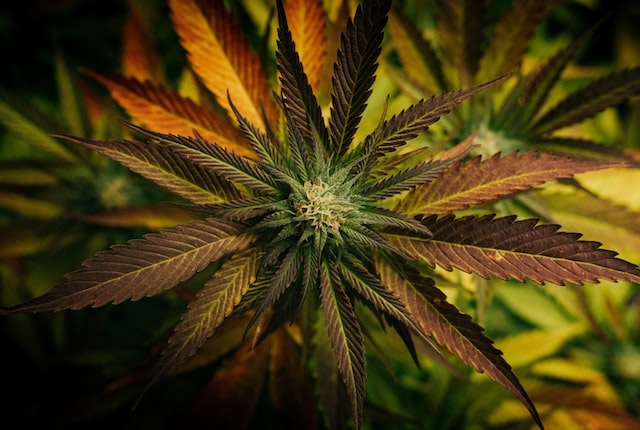How Much Do You Know About Terpenes?
Terpenes are found in ALL plants, including Cannabis. They are what gives plants and flowers their distinct flavors and scents. Each Terpene comes with its own benefits. Along with flavonoids, terpenes are the scents and smells that we associate with plants. Different cultivars of Cannabis have their own combinations of terpenes which cause each strain to have their own unique scent. Conversely, cannabinoids do not produce scents.
Terpenes provide several essential functions for plants: Some plants use their terpenes as a defense mechanism in keeping predators away. Many plants use their aromatic molecules to attract pollinating insects (like bees) which help them reproduce. Some plants release terpenes that develop due to stress. (yes even plants can feel stress!)
What about Cannabis?
Cannabis terpenes are responsible for the smell and taste of the plant. But terpenes deliver much more than just distinct smells and flavors. A study done by Dr. Ethan Russo, MD, the Director of Research and Development at International Cannabis and Cannabinoids Institute, demonstrates that terpenoid content offers “complementary pharmacological activities that may strengthen and broaden clinical applications and improve the therapeutic index of cannabis extracts.” This indicates that terpenes have synergistic effects when combined with cannabinoids and other terpenes.

Here Are The 8 Terpenes Most Commonly Found In Cannabis:
Limonene
When life gives you lemons.. you get limonene! Limonene is a liquid terpene that has a variety of uses. It is commonly found in the peels of citrus fruits, such as lemons, limes, and oranges. It is commonly used to flavor foods or medicines. Limonene is also used in fragrances and as a powerful solvent in cleaning products.

But enough of that… we want to know its benefits already!
Research suggests that limonene can boost the immune system and may help reduce stress, anxiety, and depression. Limonene has powerful antioxidant properties and may reduce the incidence and aid in the treatment of some cancers. Limonene’s benefits also include pain and heartburn relief, enhanced skin repair and the healing of wounds, along with reducing inflammation in the gut. It also contains anti-fungal and antibacterial properties, indicating that can aid in recovering from a cold or the flu.
Pinene
Pinene is a terpene that can be found in pine needles, turpentine, orange peels, dill, basil, rosemary and of course… cannabis! The smell/flavor it produces is… drumroll… pine! The flavor is pleasantly earthy.

Pinene’s known benefits include: promotes alertness, anti-inflammatory, boosts memory (can counter short term memory loss from THC). According to research, pinene’s anti-inflammatory properties can help ease symptoms of osteoarthritis. It also acts as a bronchodilator in which it can help ease the symptoms of asthma and protect the body from viruses such as bronchitis.
Myrcene
Myrcene is found in mangos, cannabis, hops, thyme plus many other plants. Myrcene’s scent is very “down to earth” as it may taste like cloves with hints of spice. It is definitely one of the muskiest/earthiest smelling terpenes.

Something interesting about this particular terpene is that it is a deciding factor in whether a cannabis plant will be determined as an indica or sativa.
For those who don’t know, indica strains provide more of a heavier, body high, which can greatly help in reducing any body aches and pains. Indica strains are known to help relax the muscles and help induce appetite.
Sativa, on the other hand, provides more of a head/cerebral high, which gives a boost in energy, focus, and creativity. Sativas are generally great in alleviating mental distress such as depression, head fog, and anxiety (of course, it all depends on a person’s biochemistry as to how any cannabis strain may affect a person). Any strain that is higher than .05% in myrcene becomes an indica. Its effects include sedation and relaxation, making it the primary factor in strains that cause “couch-lock”. This also makes sense as to why beers with high amounts of hops might make a person drowsy.
Other known effects and benefits of myrcene include anti-inflammatory, analgesic, antibiotic, and antimutagenic.
Linalool
If you are a fan of lavender, then you are a fan of Linalool! This terpene is one of the most universally used terpenes to help alleviate stress. It can be found within 200 different types of plants including lavender, coriander and cannabis. Its scent is described as floral with hints of spice. Quite invigorating for the senses.

It’s been said that humans have used linalool since ancient times to help reduce stress levels, fight inflammation and repel depression/anxiety. A recent study was performed in which mice were exposed to a stressful condition while simultaneously inhaling linalool. Results concluded that mice exposed to linalool vapors spend more time in fear-inducing situations, and they’ll continue to work to flee from a seemingly futile situation instead of becoming submissive to the stress. It’s not particularly like testing anxiety and depression in the clinic, but in these well-validated measures, linalool appears to help. Stress is one of the causes of depression and anxiety, after all.
Other benefits and effects of linalool include acting as a sedative, anti-inflammatory, anti-epileptic, analgesic and it is also anti-microbial.
Delta-3-Carene
Delta 3 Carene is quite the terpene. Even its name sounds extremely cultivated or futuristic.
This terpene is found in various plants including cannabis, basil, cedar, pine, rosemary and bell pepper. Its smell is one of a kind. It comes across very sweet, as a surge of fresh cedar with a splash of citrus. It can often taste like lemon.

Like other terpenes found in cannabis, delta-3-carene has been discovered to be an effective treatment for a wide range of medical conditions. This is due, largely to its powerful anti-inflammatory properties. This trait allows it to be used to treat arthritis, bursitis, fibromyalgia, and other conditions resulting from systemic inflammation.
Anecdotal evidence and research studies have shown that delta-3-carene also promotes the speedy healing of bones. Thus, researchers are optimistic that it could be used to relieve the symptoms of conditions like osteoporosis and osteoarthritis. A 2008 study published in the journal Phytotherapy Research found delta 3 carene to be effective in promoting bone growth and repair after injury or malnutrition. The researchers concluded that this ability could be used to treat patients suffering from osteoporosis.
Eucalyptol
Eucalyptol, also known as Cineol, is the terpene responsible for the pleasurable and cooling scents found within eucalyptus, mint, rosemary, tea tree, mugwort, bay leaves, sweet basil, sage, and some strains of cannabis. When smoked, one can experience a sweet, refreshing cooling taste.

According to research, this particular terpene has shown antibacterial, anti-inflammatory, antioxidant and anticancer properties.
Research has demonstrated eucalyptol is effective against certain strains of bacteria, including Enterobacter aerogenes, Escherichia coli, Serratia marcescens, and Staphylococcus aureus, showing its power as an antibacterial agent.
Staphylococcus aureus is resistant to certain conventional antibiotic medications. The bacteria can contribute towards numerous conditions associated with it, including impetigo, skin abscesses, wound infections, and folliculitis. Researchers believe the potential of eucalyptol as an antibacterial may mean it will be recruited as a medication to combat and prevent such infections within the body.
Beta-Caryophyllene
Have you ever heard of a terpene doing the job of a cannabinoid?
Beta-Caryophyllene has the ability to play the role as a cannabinoid through being capable of activating CB2 receptor sites within the endocannabinoid system. Activating the CB2 receptors reduces inflammation, which lessens pain and reduces damaging consequences caused by chronic inflammation. Because it only affects the CB2 receptor sites, beta-caryophyllene does not produce a psycho-active high.

As most of us understand, inflammation usually causes pain. The Journal of Neuropsychopharmacology includes a published 2014 paper that examines the painkilling effects of beta-caryophyllene in mice. The study depicts that orally-administered beta-caryophyllene reduces inflammatory pain and responses and also reduced spinal neuroinflammation. This research study concludes that beta-caryophyllene may be significantly sufficient as treatment of long-lasting and debilitating pain states. So if you are looking for an alternative to painkillers, this terpene may work well as a substitute.
Beta-Caryophyllene is a sweet and dry tasting compound that can be found in a number of food items such as allspice, fig, pot marjoram, and roman chamomile.
Humulene
Need to spice up your life? Humulene might be the terpene for you.
Humulene is found in cannabis, hops, ginger, sage, and ginseng. It’s the tang you get from drinking beer. It gives ginger and sage their burning bite! It holds great cleansing properties and can clear out bad energy. When smoking a strain with this terpene, especially combined with pinene, humulene can send your senses straight into a forest filled with pine trees on a warm, blissful day.

While humulene may bring some zest and pow to your life, it also comes with powerful healing effects.
Humulene has antibacterial, anti-cancer and anti-inflammatory properties. A 2003 study demonstrates that humulene, especially when acting synergistically with other terpenes and cannabinoids, can kill cancer cells. More recent studies established that humulene was as efficient of an anti-inflammatory compared to the steroidal drug dexamethasone.

